Test bank for Drugs Across the Spectrum 7e by Goldberg 1133594166
$38.00
This is a digital format book: Official Test bank to accompany
Drugs Across the Spectrum
Author: Raymond Goldberg
Edition: 7 (01/01/2013)
ISBN: 1133594166 / 9781133594161
- Description
- Reviews (0)
Description
You will receive this product immediate after placing the order
All resources are in electronic format and can be downloaded from your account once your payment is confirmed. Payments will be processed instantly after checkout. Please note that all sales are final and non refundable. If you still have questions, find answers on our FAQ page.
Chapter 1: Drugs in Perspective
MULTIPLE CHOICE
1. Substances that alter mood, thought processes, or that are used to manage neuropsychological illnesses or behavior are referred to as
a. ergogenic aids c. psychoactive drugs
b. anabolic aids d. designer drugs
ANS: C PTS: 1 REF: p. 2
2. The unintentional or inappropriate use of prescribed or over-the-counter drugs is referred to as
a. drug use c. drug abuse
b. drug dependence d. drug misuse
ANS: D PTS: 1 REF: p. 2
3. The intentional and inappropriate use of a drug resulting in physical, emotional, financial, social, or intellectual consequences is termed
a. drug use c. drug dependence
b. drug abuse d. drug misuse
ANS: B PTS: 1 REF: p. 3
4. According to ASAM addition is a primary, chronic _______________ of brain reward, motivation, memory, and related circuitry.
a. disease c. diagnosis
b. condition d. psychological condition
ANS: A PTS: 1 REF: p. 3
5. Which of the following groups developed the process of distillation?
a. Romans c. Greeks
b. Egyptians d. French
ANS: B PTS: 1 REF: p. 5
6. The Arabic word alkuhl means
a. alcohol c. distillation
b. essence d. fermentation
ANS: B PTS: 1 REF: p. 5
7. Aqua vitae refers to
a. distillation c. water of life
b. fermentation d. wine
ANS: C PTS: 1 REF: p. 5
8. Which event included farmers refusing to pay tax and tarring and feathering revenue officers?
a. Whiskey Rebellion c. Tax Revolt
b. Boston Tea Party d. Temperance Movement
ANS: A PTS: 1 REF: p. 5
9. Which state was the first to ban alcohol?
a. Massachusetts c. Maine
b. Virginia d. New York
ANS: C PTS: 1 REF: p. 6
10. Which psychoactive plant was prescribed by the Chinese for gout, malaria, gas pains, absent-mindedness, and rheumatism?
a. Marijuana c. Coffee beans
b. Coca leaves d. Datura
ANS: A PTS: 1 REF: p. 6
11. The Greek historian Herodotus noted that marijuana had the dual properties of producing intoxication and ___________.
a. unconsciousness c. blood shot eyes
b. hallucinations d. cloth
ANS: D PTS: 1 REF: p. 6
12. The Roman physician Galen described how marijuana seeds were eaten to simulate appetite and
a. induce hallucinations c. grow hair
b. cure headaches d. induce a sense of warmth
ANS: D PTS: 1 REF: p. 6
13. A group of men who, while under the influence of hashish, allegedly terrorized and killed people were referred to as
a. laudanum legions c. Sinsemilla legion
b. suicide soldiers d. Hashishiyya
ANS: D PTS: 1 REF: p. 6
14. W.B. O’Shaughnessy in 1839 wrote that a tincture of hemp was an effective analgesic and ___________.
a. muscle relaxant c. textile
b. solvent d. food
ANS: A PTS: 1 REF: p. 7
15. The British defeated the Chinese in the Opium War because
a. the Chinese were under the influence of opium while fighting c. China taxed opium too much and the people revolted
b. the British stopped selling arms to China d. the British had superior naval strength
ANS: D PTS: 1 REF: p. 8
16. Laudanum was a drug containing primarily
a. cocaine c. marijuana
b. opium d. caffeine
ANS: B PTS: 1 REF: p. 8
17. Which holy book condemned coffee as an intoxicant and banned its use?
a. Bible c. Concordance
b. Koran d. Talmud
ANS: B PTS: 1 REF: p. 9
18. “Penny Universities” were establishments that primarily served
a. alcohol c. coffee
b. opium d. bromides
ANS: C PTS: 1 REF: p. 9
19. Robert Louis Stevenson allegedly wrote Dr. Jekyll and Mr. Hyde while under the influence of
a. bromides c. cocaine
b. paraldehyde d. barbital
ANS: C PTS: 1 REF: p. 10
20. Amphetamines were first synthesized in
a. Asia c. Brazil
b. Mexico d. Germany
ANS: D PTS: 1 REF: p.10
21. Which of the following are sedative-hypnotic drugs?
a. Barbiturates c. Inhalants
b. Minor tranquilizers d. All of the above
ANS: D PTS: 1 REF: p. 10
22. One of the trade names for meprobamate is
a. Valium c. Librium
b. Xanax d. Miltown
ANS: D PTS: 1 REF: p. 11
23. Use of ether dates back to the late
a. 1500s c. 1700s
b. 1600s d. 1800s
ANS: C PTS: 1 REF: p. 12
24. Which of the following drugs is also called “God’s flesh?”
a. LSD c. tobacco
b. Jamestown weed d. psilocybin
ANS: D PTS: 1 REF: p. 12
25. Peyote contains
a. LSD c. psilocybin
b. ergot d. mescaline
ANS: D PTS: 1 REF: p. 12
26. LSD originated from a
a. root c. leaf
b. fungus d. dust
ANS: B PTS: 1 REF: p. 12
27. Humans were believed to have first sampled tobacco around
a. 400-500 B.C. c. 600-900 A.D.
b. 100-400 A.D. d. 1000-1200 A.D.
ANS: C PTS: 1 REF: p. 13
28. Some speculate that girls and women condemned as witches in Salem, Massachusetts, were displaying symptoms similar to
a. tobacco intoxication c. ergotism
b. caffeinism d. barbiturate poisoning
ANS: C PTS: 1 REF: p. 13
29. John Rolfe was sent to _______to develop a tobacco industry.
a. New York c. Virginia
b. North Carolina d. Georgia
ANS: C PTS: 1 REF: p. 13
30. A _______________ veteran established the first British cigarette factory.
a. Crimean War c. WWI
b. Revolutionary War d. WWII
ANS: A PTS: 1 REF: p. 14
MATCHING
a. Laudanum f. Nitrous oxide
b. Soldier’s disease g. Psilocybin
c. Benzedrine h. Ergotism
d. Bromides i. Paraldehyde
e. Benzodiazepine j. Meprobamate
1. Early amphetamine once available over-the-counter
2. Non-barbiturate sedative-hypnotic drug
3. Popular 1950s minor tranquilizer
4. 1860s remedy for epileptic convulsions
5. Reaction to a fungus that grows on rye
6. Laughing gas
7. Drug derived from opium
8. Anti-anxiety Drug
9. Hallucinogen found in certain mushrooms
10. Morphine addiction during the Civil War
1. ANS: C PTS: 1
2. ANS: I PTS: 1
3. ANS: J PTS: 1
4. ANS: D PTS: 1
5. ANS: H PTS: 1
6. ANS: F PTS: 1
7. ANS: A PTS: 1
8. ANS: E PTS: 1
9. ANS: G PTS: 1
10. ANS: B PTS: 1
TRUE/FALSE
1. Ether was originally developed for recreational use.
ANS: F PTS: 1
2. Mixing drugs is an example of drug misuse.
ANS: T PTS: 1
3. The early Egyptians revered wine and beer and attributed spiritual qualities to both.
ANS: T PTS: 1
4. Jamestown weed is also known as locoweed.
ANS: T PTS: 1
5. The Whiskey Rebellion was a protest by farmers refusing to pay tax on whiskey.
ANS: T PTS: 1
6. The temperance movement started in the early 1900s.
ANS: F PTS: 1
7. Marijuana use dates back to no earlier than the 1500s.
ANS: F PTS: 1
8. The hashishiyya were a group of men who under the influence of hashish would kill people
ANS: T PTS: 1
9. The original use of coffee can be traced back to England.
ANS: F PTS: 1
10. Mariana’s coca wine contained cocaine.
ANS: T PTS: 1
11. The original formula for Coca-Cola contained cocaine.
ANS: T PTS: 1
12. The first U.S. cigar factory was established in Connecticut.
ANS: T PTS: 1
13. The temperance movement sought to reduce alcohol use, not eliminate it.
ANS: T PTS: 1
14. In the early 1900s, smoking tobacco was less popular than chewing and snuff use.
ANS: T PTS: 1
15. The invention of the hypodermic needle helped to decrease the potential of morphine addiction.
ANS: F PTS: 1
16. Coca leaves were an integral part of the Incan society.
ANS: T PTS: 1
17. The Opium Wars involved the United States and Turkey.
ANS: F PTS: 1
18. “Penny universities” were liberal arts universities attended mostly by women in 1600s England.
ANS: F PTS: 1
19. Freud was an early proponent of the medical use of cocaine.
ANS: T PTS: 1
20. Chloral hydrate is also known as “knockout drops.”
ANS: T PTS: 1
ESSAY
1. Define and give examples of drug use, misuse, and abuse.
ANS:
• Drug misuse: unintentional or inappropriate use of prescribed or over-the-counter drugs (ex., using cough syrup to get high).
• Drug Abuse: the intentional and inappropriate use of a drug resulting in physical, emotional, financial, social or intellectual consequences. (ex., regularly using cough syrup to get high and committing crimes in order to procure cough syrup)
PTS: 1 REF: p. 2-4
2. Identify and briefly describe what you see as two common historical themes regarding the different categories of drugs?
ANS:
• Every culture sanctions the use of some drugs and strongly disapproves the use of others
• Many drugs have been an important part of a country’s economy.
PTS: 1 REF: p. 4-10
3. Which drug or category of drugs has had the most impact on society? Why?
ANS:
• Alcohol
• Legal in most countries and misuse and abuse has significant economic and social impacts. Responsible use can benefit economies.
PTS: 1 REF: p. 4-12
SHORT ANSWER
1. What factors affect, or are inherent in, the 18-25-year-old age group that predisposes them to having the highest rates of drug abuse? Can anything be done to change this?
ANS:
No Answer Given
PTS: 1
2. Substance abuse is very costly to society. The public health care costs related to substance abuse provided through Medicaid exceed $4 billion. What do you think the role of the individual, family, community, and government should be with respect to substance abuse?
ANS:
No Answer Given
PTS: 1
3. After reading Chapter 1, it is clear that drugs have been, and continue to be, important to society in a variety of positive and negative ways. What are some of the positive effects of drugs on society? What are some of the negative effects of drugs on society? Can we really talk about drugs as being “good” or “bad?” Why or why not?
ANS:
No Answer Given
PTS: 1
Be the first to review “Test bank for Drugs Across the Spectrum 7e by Goldberg 1133594166”
You must be logged in to post a review.

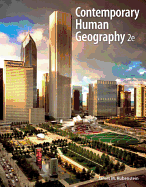


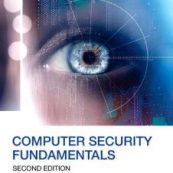
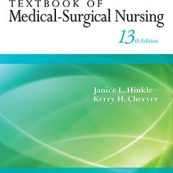
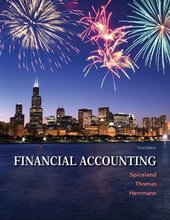
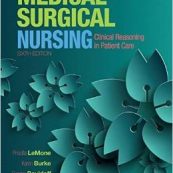
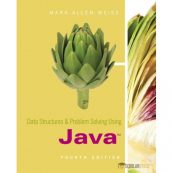
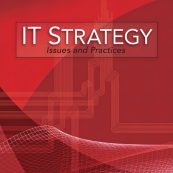
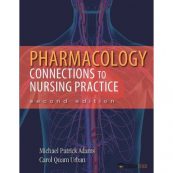
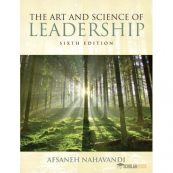
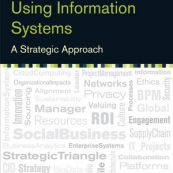
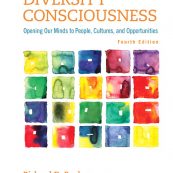
Reviews
There are no reviews yet.